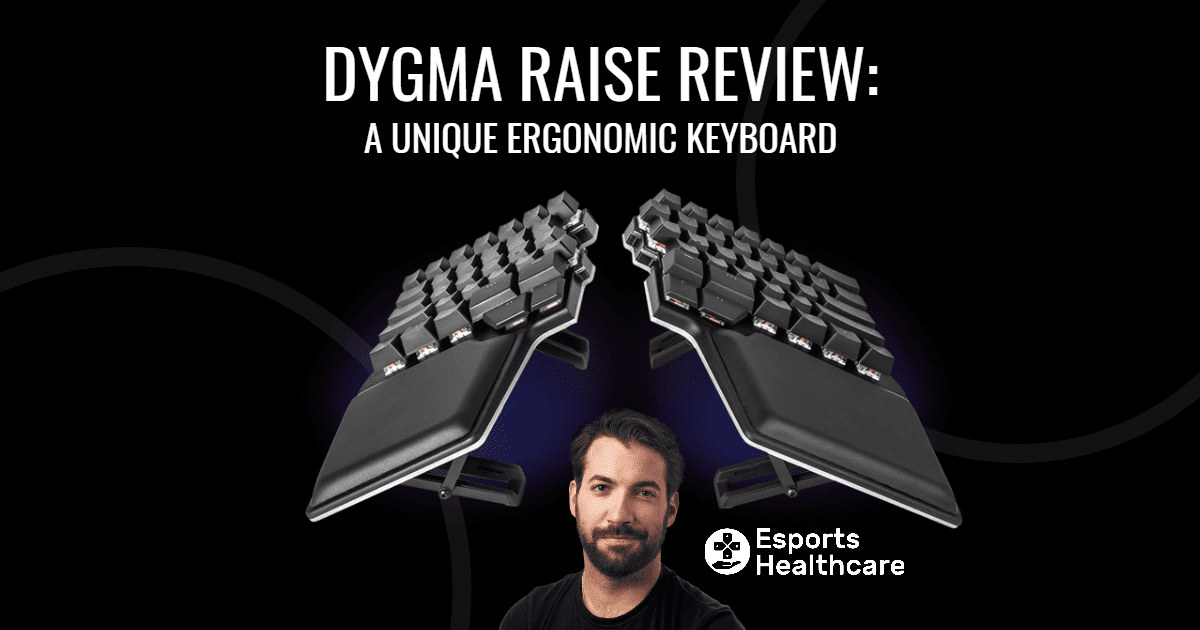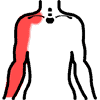Hand and Wrist Health

Warm-up
No matter how you game, the Esports Healthcare Gamer Warm-up prepares you for your sessions.

Stretches
Following any session, the Esports Healthcare Gamer Stretches help protect your muscles and joints from injury.

Injury Prevention
Esports Healthcare Injury Prevention is designed to reduce injuries to the forearms, wrists, hands, and fingers.
Further reading
Common ailments of the hand and wrist
Below is a list of 6 common esports injuries and/or ailments that may cause pain, dysfunction, or other symptoms in the hand and wrist. The list includes icons to help you identify the ailment by its most common symptom presentation. Click any of the names to read a brief background on that specific injury or ailment. Each of the esports injuries listed below has its own dedicated page with all the information you’ll need to understand the ailment, to prevent it, or even to rehabilitate the injury if it has occurred.
Mouse elbow is one of the most common esports injuries (all the above are better categorized as ailments or conditions). Mouse elbow is a chronic injury to the extensor tendons of the forearm (which control the wrist and fingers) that attach to the outside (thumb side) of the elbow. The muscles involved are the extensor muscles that open the hand and bend back the wrist. As the name suggests, PC gamers are more likely to experience this injury due to the use of the mouse.
Due to misuse and imbalance, the fiber orientation of the extensor tendons on the outside of the elbow become disrupted. This dysfunction is called a tendinopathy, which is different than tendinitis—a common misnomer for this condition. Collectively, tendinopathies are the most common esports injuries.
Gamer’s thumb is the common term for the diagnosis of tenosynovitis from repetitive use of the thumb. Specifically, gamer’s thumb affects the tendon sheaths of the extensor pollicis brevis and abductor pollicis longus muscles. These muscles pull the thumb away from the hand and palm.
This condition is also commonly associated with and precedes de Quervain’s—or stenosing tenosynovitis—of the same tendon sheaths named above. This condition is categorized by thickening and hardening of the tendon sheath and will often require surgery.
In console gaming, these motions are primarily involved in thumb stick movements. This condition has also recently been identified with greater prevalence due to text messaging on mobile devices and is sometimes called “texter’s thumb.” Although possible, a diagnosis of gamer’s thumb is less common for PC gamers than it is for console gamers.
Cubital tunnel syndrome is an impingement or irritation of the ulnar nerve within the cubital tunnel at the elbow. This is the area commonly referred to as the funny bone. If the ulnar nerve becomes irritated in this region due to pressure, inflammation, and/or stretching, symptoms will occur.
Cubital tunnel syndrome is more prevalent in console gamers due to the position of the hands and arms while gripping a controller. If you’re a console gamer, you’re more likely to develop cubital tunnel syndrome if you lean your elbows on your knees or on the armrests of your chair.
Note: although more common in console gamers, PC gamers are not completely excluded from experiencing cubital tunnel syndrome. If you’re a PC gamer, you may still be at risk for developing cubital tunnel syndrome.
Medial epicondylosis is an ailment that occurs in the flexor tendons of the forearm (which control the wrist and fingers) that attach to the inside (pinky side) of the elbow. The muscles involved are the flexor muscles that close the hand and flex down the wrist.
This injury tends to be more common in console gamers. It would not be surprising if this condition earned a gamer name—perhaps along the lines of “trigger elbow” or “console elbow.”
Due to misuse and imbalance, the fiber orientation of the flexor tendons on the inside of the elbow become disrupted. This dysfunction is called a tendinopathy, which is different than tendinitis—a common misnomer for this condition. Collectively, tendinopathies are the most common esports injuries.
Thoracic outlet syndrome occurs when there is impingement on the nerves or blood vessels in an area between your clavicle (collar bone) and ribs in the space between your neck and shoulder joint.
Most often, thoracic outlet syndrome in gamers will come secondary to poor posture—slouching forward in their chairs and leaning towards the screen while gaming. Another condition which may lead to thoracic outlet syndrome is upper crossed syndrome.
Carpal tunnel syndrome is impingement or irritation of the median nerve within the carpal tunnel—an anatomical structure found at the base of your hand. When the median nerve becomes irritated in this region due to pressure, inflammation, and/or stretching, symptoms are likely to occur. Despite its attention, carpal tunnel syndrome is actually not among the most common esports injuries.
However, carpal tunnel syndrome tends to occur in people who spend a lot of time using a PC with poor body mechanics; therefore, if you’re a PC gamer, you are more likely to experience this ailment. More specifically, carpal tunnel syndrome is more likely to occur in your right hand due to prolonged extension of the wrist to hold the mouse.
Note: if you’re a console gamer, you are not necessarily excluded from the risk of developing carpal tunnel syndrome. However, due to the hand positions and movement patterns involved in gripping a console controller, it is significantly less common.










